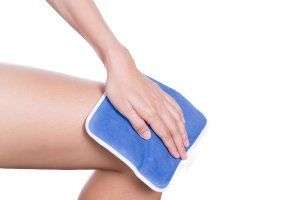
Applying ice after an injury is a common method for reducing pain and swelling. It is especially effective for athletes, who often experience sudden, painful injuries. This type of cold therapy, also known as cryotherapy, is used by chiropractors for the same purposes.
Types of Cold Therapy
Many types of cold therapy are available to reduce pain and swelling after an injury, including the use of:
- Ice packs
- Ice massage
- Slush bucket (half water, half crushed ice)
- Whirlpool with ice water
- Cold wet towels
Benefits of Cold Therapy
Cold temperatures cause blood vessels to narrow, which reduces the flow of blood into an area. As a result, cold therapy:
- Reduces swelling and pain after injury
- Slows movement of fluid into tissues
- Reduces the amount of chemicals that cause inflammation in injured tissue
- Reduces bleeding
- Slows the movement of pain signals from nerves
- Decreases muscle spasms by reducing the contraction of muscles
Cold therapy may also keep cells in the injured area from dying due to the lack of oxygen. This is because an injury can reduce blood flow — and oxygen — to the area. However, cold therapy slows the activity of cells, which reduces how much oxygen they need to stay alive.
Tips for Best Cold Therapy
For cold therapy to work, cold packs should be applied as soon as possible. Pain and inflammation are common within 72 hours after an injury.
To avoid frostbite, cold packs should be applied for only 10 minutes at a time, with breaks of at least an hour in between. The ice can be applied several times a day, for three or four days after an injury — or as directed by your chiropractor.
Also, cold packs should never be applied directly to the skin. Instead, a towel should be placed between the skin and cold pack.
Cold therapy may not be appropriate for everyone. Some people respond to cold temperatures by breaking out in hives or developing pain in the joints.
If you have questions about cold therapy or think you might benefit from this type of treatment, please contact our office to schedule an appointment and receive more information.
